
伤口世界
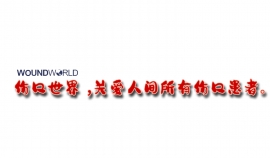
- 星期一, 19 6月 2023
Comparing sodium‑glucose cotransporter 2 inhibitors and dipeptidyl peptidase‑4 inhibitors on new‑onset depression: a propensity score‑matched study in Hong Kong
Jonathan V. Mui1 · Lifang Li2 · Oscar Hou In Chou1,3 ·iD. Nida Azfar1 · Athena Lee1,4 · Jeremy Hui1,3 · Sharen Lee1 · Gary Tse1,5,6,8,9 · Jiandong Zhou7
Received: 29 October 2022 / Accepted: 24 February 2023 / Published online: 31 March 2023 © The Author(s) 2023
Abstract
Introduction The risk of new onset depression associated with sodium-glucose co-transporter 2 inhibitor (SGLT2I) use in patients with type 2 diabetes mellitus (T2DM) remains unclear. This study investigated the risk of new onset depression between SGLT2I and dipeptidyl peptidase 4 inhibitor (DPP4I) users.
Methods This was a population-based cohort study of T2DM patients in Hong Kong between January 1st, 2015, and December 31st, 2019. T2DM patients over 18 with either SGLT2I or DPP4I use were included. 1:1 propensity-score matching using the nearest-neighbour method was conducted based on demographics, past comorbidities and non-DPP4I/SGLT2I medication use. Cox regression analysis models were used to identify significant predictors for new onset depression.
Results The study cohort included a total of 18,309 SGLT2I users and 37,269 DPP4I users (55.57% male, mean age: 63.5±12.9 years) with a median follow-up duration of 5.56 (IQR: 5.23–5.8) years. After propensity score matching, SGLT2I use was associated with a lower risk of new onset depression compared to DPP4I use (HR: 0.52, 95% CI: [0.35, 0.77], P=0.0011). These findings were confirmed by Cox multivariable analysis and sensitive analyses.
Conclusion SGLT2I use is associated with significantly lower risk of depression compared to DPP4 use in T2DM patients using propensity score matching and Cox regression analyses.
Keywords Type 2 diabetes · Depression · Anti-diabetic medication · SGLT2 inhibitor · DPP4 inhibitor
Jonathan V. Mui and Lifang Li are joint first authors.
“This article belongs to the topical collection “Health Education and Psycho-Social Aspects, managed by Massimo Porta and Marina Trento”.
Gary Tse
该Email地址已收到反垃圾邮件插件保护。要显示它您需要在浏览器中启用JavaScript。
* Jiandong Zhou
该Email地址已收到反垃圾邮件插件保护。要显示它您需要在浏览器中启用JavaScript。
1 Diabetes Research Unit, Cardiovascular Analytics Group, Hong Kong, China
2 Department of Biostatistics and Health Informatics, Institute of Psychiatry, Psychology and Neuroscience, King’s College London, London, UK
3 Department of Medicine, The University of Hong Kong, Hong Kong, China
4 Department of Medicine & Therapeutics, The Chinese University of Hong Kong, Hong Kong, China
5 Department of Cardiology, Second Hospital of Tianjin Medical University, Tianjin, China
6 Kent and Medway Medical School, Canterbury, UK
7 Nufeld Department of Medicine, University of Oxford, Oxford, UK
8 School of Nursing and Health Studies, Hong Kong Metropolitan University, Hong Kong, China
9 Tianjin Institute of Cardiology, The Second Hospital of Tianjin Medical University, Tianjin 300211, China
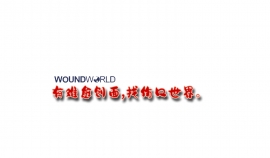
- 星期四, 15 6月 2023
Aspirin in diabetic patients at primary prevention: insights of the VITAL cohort
D.Caldeira1,2,3· M. Alves3,4,5 · J. J. Ferreira3,4 · F. J. Pinto1,2
Received: 5 October 2022 / Accepted: 29 December 2022 / Published online: 18 January 2023 © The Author(s) 2023
D. Caldeira
该Email地址已收到反垃圾邮件插件保护。要显示它您需要在浏览器中启用JavaScript。
1 Centro Cardiovascular da Universidade de Lisboa–CCUL (CCUL@RISE), Faculdade de Medicina, CEMBE, CAML, Universidade de Lisboa, Lisbon, Portugal
2 Serviço de Cardiologia, Hospital Universitário de Santa Maria–CHULN, Lisbon, Portugal
3 Laboratory of Clinical Pharmacology and Therapeutics, Faculdade de Medicina, Universidade de Lisboa, Lisbon, Portugal
4 Faculdade de Medicina, Instituto de Medicina Molecular, Universidade de Lisboa, Lisbon, Portugal
5 Serviço de Medicina III, Hospital Pulido Valente, CHLN, Lisbon, Portugal
Abstract
Purpose Aspirin use among patients with diabetes in primary prevention is still a matter of debate. We aimed to evaluate the potential cardiovascular risk benefit of aspirin in primary prevention, using data from a contemporary cohort.
Methods Retrospective analysis of the VITAL cohort with>20,000 individuals at primary prevention who were followed for a median of 5.3 years. The population was evaluated according to the baseline diabetes status, and then aspirin use was evaluated among diabetic patients. Cox regression models were used to estimate the risks of mortality and cardiovascular outcomes. The estimates were reported using adjusted hazard ratio (HR) and 95% confidence intervals (95%CI).
Results Diabetic patients (n=3549; 13.7%) showed to increase the risk of all-cause mortality (HR 1.61, 95%CI 1.33–1.94), and major adverse cardiovascular events (MACE) (HR 1.36 95%CI 1.11–1.68) than non-diabetic population. Diabetic patients taking aspirin were older, more frequently man, hypertensive, current users of statins, and current smokers compared with diabetic patients who did not use aspirin at baseline. There was no difference between diabetic aspirin users and non-users regarding all-cause mortality (HR 0.80, 95%CI 0.59, 1.10), MACE (HR 0.92, 95%CI 0.64, 1.33), coronary heart disease (HR 0.98, 95%CI 0.67, 1.43), or stroke (HR 0.87, 95%CI 0.48, 1.58).
Conclusions The VITAL data confirmed diabetes as an important risk factor for cardiovascular events in a contemporary cohort but did not show cardiovascular benefits of aspirin in primary prevention among people with diabetes who were shown to be at higher risk of cardiovascular events.
Keywords Cardiovascular disease · Primary prevention · Aspirin · Diabetes
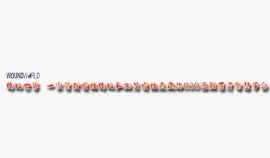
- 星期四, 01 6月 2023
Guidelines on interventions to enhance healing of foot ulcers in people with diabetes IWGDF 2023 update
AUTHORS
Pam Chen1,2, Nalini Campillo Vilorio3 , Ketan Dhatariya4, 5, William Jeffcoate6 , Ralf Lobmann7 , Caroline McIntosh8 , Alberto Piaggesi9 , John Steinberg10, Prash Vas11, Vijay Viswanathan12, Stephanie Wu13, Fran Game14, on behalf of the International Working Group on the Diabetic Foot
INSTITUTIONS
1 Joondalup Health Campus, Ramsay Healthcare Australia, Joondalup, Western Australia, Australia
2 Faculty of Health, University of Tasmania, Hobart, Tasmania, Australia
3 Department of Diabetology, Diabetic Foot Unit, Plaza de la Salud General Hospital, Santo Domingo, Dominican Republic
4 Elsie Bertram Diabetes Centre, Norfolk and Norwich University Hospitals NHS Foundation Trust, Norwich, UK
5 Norwich Medical School, University of East Anglia, Norwich, UK
6 Retired physician, Nottingham, UK
7 Clinic for Endocrinology, Diabetology and Geriatrics, Klinikum Stuttgart, Stuttgart, Germany
8 Podiatric Medicine, School of Health Sciences, University of Galway, Ireland
9 Diabetic Foot Section, Department of Medicine, University of Pisa, Italy
10 Georgetown University School of Medicine, Washington DC, USA
11 King’s College Hospital NHS Foundation Trust, London, UK
12 MV Hospital for Diabetes and Prof M Viswanathan Diabetes Research Center, Chennai, India
13 Dr. William M. Scholl College of Podiatric Medicine at Rosalind Franklin University of Medicine and Science, North Chicago, Illinois, USA
14 University Hospitals of Derby and Burton NHS Foundation Trust, Derby, UK
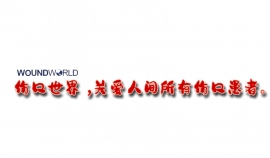
- 星期二, 30 5月 2023
Guidelines on the prevention of foot ulcers in persons with diabetes IWGDF 2023 update
AUTHORS
Sicco A. Bus1,2, Isabel C.N Sacco3 , Matilde Monteiro-Soares4,5,6, Anita Raspovic7 , Joanne Paton8 , Anne Rasmussen9 , Larry A. Lavery10, Jaap J. van Netten1,2, on behalf of the International Working Group on the Diabetic Foot
INSTITUTIONS
1 Amsterdam UMC, University of Amsterdam, Department of Rehabilitation Medicine, Amsterdam, the Netherlands
2 Amsterdam Movement Sciences, program Rehabilitation & Development, Amsterdam, the Netherlands
3 Physical Therapy, Speech and Occupational Therapy department, School of Medicine, University of São Paulo, São Paulo, Brazil
4 Higher School of Health of the Portuguese Red Cross, Lisbon, Portugal
5 Department of Community Medicine, Information and Health Decision Sciences (MEDCIDS), Faculty of Medicine, University of Porto, Porto, Portugal
6 RISE@ CINTESIS, Faculty of Medicine, Oporto University, Porto, Portugal
7 Discipline of Podiatry, School of Allied Health, Human Services and Sport, La Trobe University, Melbourne, Victoria, Australia
8 School of Health Professions, University of Plymouth, Plymouth, UK
9 Steno Diabetes Center Copenhagen, Herlev, Denmark
10 Department of Plastic Surgery, University of Texas Southwestern Medical Center, Dallas, Texas, USA

- 星期五, 26 5月 2023
Guidelines on the diagnosis and treatment of foot infection in persons with diabetes IWGDF/IDSA 2023
AUTHORS
Éric Senneville1 , Zaina Albalawi2 , Suzanne A.
van Asten3 , Zulfiqarali G. Abbas4 , Geneve Allison5 ,
Javier Aragón-Sánchez6 , John M. Embil7 , Lawrence
A. Lavery8 , Majdi Alhasan9 , Orhan Oz10, Ilker
Uçkay11, Vilma Urbančič-Rovan12, Zhang-Rong Xu13,
Edgar J.G. Peters14, on behalf of the International
Working Group on the Diabetic Foot
INSTITUTIONS
1 Department of Infectious Diseases, Gustave Dron Hospital, Tourcoing, France
2 Department of Medicine, Division of Endocrinology, Memorial University, Canada
3 Leiden University Medical Centre, Leiden, the Netherlands
4 Abbas Medical Centre, Muhimbili University of Health and Allied Sciences, Dar es Salaam, Tanzania
5 Tufts Medical Center, Department of Medicine, Boston, Massachusetts, USA
6 La Paloma Hospital, Las Palmas de Gran Canaria, Spain
7 Alberta Public Laboratories, University of Alberta Hospital, Edmonton, Alberta, Canada
8 Department of Plastic Surgery, Southwestern Medical Center, Dallas, Texas, USA
9 Department of Medicine, Prisma Health-Midlands, Columbia, South Carolina, USA
10 UT Southwestern Medical Center, Dallas, Texas, USA
11 Balgrist University Hospital, Zurich, Switzerland
12 Faculty of Medicine, University Medical Centre, University of Ljubljana, Ljubljana, Slovenia
13 Diabetes Centre, The 306th Hospital of PLA, Beijing, China
14 Department of Internal Medicine, Infection and Immunity Institute, Amsterdam UMC, Vrije Universiteit Amsterdam, Amsterdam, the Netherlands
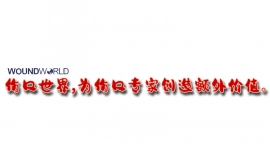
- 星期二, 23 5月 2023
Wound drainage measurements: a narrative review
Terri Shih1 · Sarah Park1 · Linnea R. Thorlacius2,3 · Steven Daveluy4 · Amit Garg5 · Susanne D. Goegji6 · Joslyn S. Kirby7 · Barry M. McGrath8 · Peter T. Riis2 · Bente Villumsen9 · Kari Zalik10 · Gregor B. E. Jemec2,11 · Jennifer L. Hsiao12
Received: 16 July 2022 / Revised: 7 December 2022 / Accepted: 6 January 2023 © The Author(s) 2023
Abstract
Drainage from chronic wounds can significantly negatively impact a patient’s quality of life. Change in severity of wound drainage is an important measure of treatment efficacy for wounds. This study reviews existing tools used to assess wound drainage. Qualitative drainage tools are overall less burdensome, and however, differences in user interpretation may reduce inter-rater reliability. Quantitative drainage tools enable more reliable comparisons of drainage severity and treatment response between patients but sometimes require equipment to administer, increasing responder burden. Gaps in the current wound drainage measurement landscape are highlighted. Many of the existing scales have not been validated in robust studies. There is also a lack of validated global drainage measurement tools for patients with chronic inflammatory skin disorders with drainage, such as hidradenitis suppurativa or pyoderma gangrenosum. Development of a succinct drainage measurement tool for inflammatory skin diseases where drainage is a prominent symptom will improve monitoring of meaningful treatment response.
Keywords Hidradenitis suppurativa · Wound · Drainage · Measure · Tool
Jennifer L. Hsiao
该Email地址已收到反垃圾邮件插件保护。要显示它您需要在浏览器中启用JavaScript。
1 David Gefen School of Medicine, University of California Los Angeles, Los Angeles, CA, USA
2 Department of Dermatology, Zealand University Hospital, Roskilde, Denmark
3 Department of Dermato-Venereology & Wound Healing Centre, Bispebjerg Hospital, Copenhagen, Denmark
4 Department of Dermatology, Wayne State University, Detroit, MI, USA
5 Department of Dermatology, Donald and Barbara Zucker School of Medicine at Hofstra/Northwell, New Hyde Park, NY, USA
6 Amsterdam, The Netherlands
7 Department of Dermatology, Penn State Milton S. Hershey Medical Center, Hershey, PA, USA
8 HS Ireland, County Clare, Ireland
9 Danish HS Patients’ Association, Copenhagen, Denmark
10 Toronto, Canada
11 Health Sciences Faculty, University of Copenhagen, Copenhagen, Denmark
12 Department of Dermatology, University of Southern California, 1441 Eastlake Ave, Ezralow Tower, Suite 5301, Los Angeles, CA 90033-9174, USA
